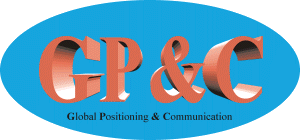

Get the document as a MS WORD document
AMCP-7/WP__
AERONAUTICAL MOBILE COMMUNICATIONS PANEL (AMCP)
SEVENTH PANEL MEETING
Montreal, 22-30 March, 2000
Agenda Item 2: Development and validation of draft SARPs for the VDL Mode 4 system, including the manual on technical details and the implementation manual
POSITION AND PLANS OF RUSSIA CONCERNING THE REALIZATION OF THE AUTOMATIC DEPENDENT SURVELLANCE – BROADCAST IN ATM OF RUSSIA
(Presented by V. Bondarenko, the Russian Member)
One of the main peculiarities of Russia lies in its fast territories and great length of international flight routes. Russian airspace covers 25 million square kilometers with 17 million kilometers of the continental part and 8 million kilometers of oceanic airspace. Since traditional means of communication, navigation and surveillance used in Russian ATM system have certain essential shortcomings due to the limited area of activity and impossibility to create seamless radio communication, radio navigation and radar fields, especially in difficult to access regions, it is planned to perform the transition to the advanced CNS/ATM systems according to ICAO recommendations. In particular, it is planned to create an automatic dependent surveillance-broadcast (ADS-B) system based on VDL Mode 4 which at present is developing dynamically as one of components of the global plan of CNS/ATM implementation adopted by ICAO.
In January 1998 Federal Service of Air Transport (FSAT) of Russia, State Corporation of ATM of Russia, GosNII "Aeronavigatsia" and GosNII of Aviation Systems have taken a joint decision "On the organization of experimental works in the promotion of VDL Mode 4 for the sake of ADS-Broadcast and other applications for ATC", where a VHF data link is considered as providing the most expedient way of the transition to the future ATM system in Russia.
In October 1999 FSAT signed an order "On the creation and implementation of the automatic dependent surveillance-broadcast system into the civil aviation of Russia", which specifies the 1st of October 2005 as the start of the application of the automatic dependent surveillance-broadcast for Russian civil aviation as a means for air traffic control.
To perform the order a number of projects for local realization of ADS-B was prepared.
The next two years will be dedicated to the project of the experimental operation of ADS-B for surveillance and air traffic control both en-route and in the terminal area. This work is based on the regional state enterprise for the use of airspace and air traffic control "Tyumenaerocontrol". The project is aimed to validate the advantages of ADS-B application in ATM and airlines which have equipped their aircraft with these devices.
Given project plans to carry out the validation of the ATC technology and working procedures for aircrews using ADS-B and to work through the procedures of the equipment certification.
Important part of the project belongs to the validation of ADS-B application for the support of flights without radar field of surveillance.
control system)
In 1999 airport Domodedovo (Moscow) put into operation the system of surface movement guidance and control aimed to coordinate the work of vehicles for the servicing of aircraft.
The automated system controls the location and status of vehicles and transmits commands to drivers. Data acquired on indicators of the vehicles is processed in the system and transferred to the operator. At the same time airport data base sends information of the expected time of departure and arrival of aircraft, places of parking that is used, stored and then analyzed in order to increase the efficiency of transportation services.
2000 will see the integration of the system into the automated surface movement guidance and control system that is being developed now. This system is expected for deployment in Domodedovo and Kurumoch (Samara) airports in parallel with equipping of aircraft of some airlines with on-board ADS-B devices.
2.4.4. Creation of a ground network for ADS-B implementation. Local ground stations deployed at the first stage will then be united into a communication network. Ground ADS-B stations installed in Moscow, St.-Petersburg and Riga will later on provide the merging of both Russian and North European ADS-B networks for the integration and harmonization into future air navigation system.
Russian FSAT is deeply concerned by the absence of SARPs for VDL Mode 4 adopted by the ANC and consequently by the risk of realization of incompatible components of the future global CNS/ATM system.
The experts’ group is proposed:
Seach words: GPC Systems International AB, GNSS-Transponder, GNSS Transponder, GP&C Transponder, GPS-Transponder, STDMA data link, SOTDMA, ICAO VDL Mode 2, ICAO VDL Mode 3, ICAO VDL Mode 4, ADS-B broadcast, Surveillance, Mode S Squitter, GPS-Squitter, AMASS, ASDE, TCAS, CDTI, DGPS, DGNSS, GBAS, LAAS, ICAO/AMCP, RTCA Task Force 3, Free Flight Steering Committee, Flight 2000, CNS/ATM, NEAN, NEAP, NAAN, FARAWAY, SUPRA, MAGNET-B, FREER, PETALII, 4S Transponder, AIS transponder, Håkan Lans, Hakan Lans, Håkan Lantz, Russia, http://www.gpc.se, http://www.gpc.se